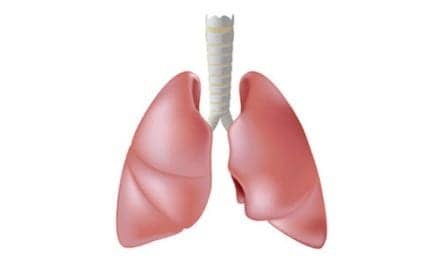Discrepancies in watch times can have serious clinical and legal implications.
The ability to record accurate time is an important factor in quality health care. The need to adhere to medication administration times, along with the time and sequence and and outcomes of patient care events, both positive and negative, are cornerstones of accurate and timely medical record keeping. In times of crisis and medical emergency, accurate recording of the timing of events can have marked influence on both patient care and the defense of such care in legal actions. A key and often-contentious element in the building of a legal defense or plaintiff action is construction of an accurate time line of events. The times recorded in patient care records both hand-written and computer-generated often are derived from times shown on caregivers’ watches, which can run ahead of or behind the time, potentially causing incorrect times to be recorded in official patient records.
Consider the case of a patient suffering a witnessed cardiac arrest on the patient floor. The witness records the time as 1400. The caregiver witness immediately calls a code and begins CPR (1401). The code team members check their watches and note the code page as occurring at the following times: nursing supervisor, 1405; respiratory therapist, 1357; anesthesia, 1403; and ER physician, 1410. The floor nursing staff members respond and note the following times: 1401, 1356, 1406. As can be seen, a wide variation in times has already been established, resulting in the possibility of charted times ranging from 1356 to 1410; a substantial 14-minute time variance. Consider the problems that could arise in a legal proceeding when trying to defend, for example, the 9-minute delay in ER physician response (1410) to the 1401 code call. What if the floor nurse who recorded the 1356 time was the data recorder? The ER physician would appear to be 14 minutes late and his or her charting would substantiate that claim.
Further consider the implications related to drug delivery. A generations-old maxim of medication administration points to a “golden rule” of pharmacological therapy: “Right drug, right patient, right dose, right route, right time.” Implicit in this guideline is the temporal spacing of dose administration. When we are not starting at the same time, how can we be sure that the dose spacing is correct?
We hypothesized that we would find wide variations in the time shown on health care providers’ watches.
Literature Review and Methods
Although recent (1999-2003) professional periodical literature was extensively searched using CINAHL and Medline databases, no citations were recovered using variances of search terms “time records, charting times, medical records, and standards for recording time.”
Convenience samples of nursing and respiratory care texts were examined by going to the appropriate sections of their indices and looking for the same phrases. Only one of these texts contained discussion of this material.1,2
The subjects in this study were 70 nursing and allied health students at the University of Kansas Medical Center. Although we also attempted to survey medical students, this proved to be impossible due to the differences between the Medical School academic calendar and that of the Nursing and Allied Health Schools. After receiving permission from the instructors, we surveyed the students in class. Prior to the survey, students were told that the study was designed to determine the variability of time settings on nursing and allied health students’ watches to estimate effects of these variations on recording medical events. The study was completed in less than 5 minutes, and there were no identified possible harms since the data were nonidentifiable. Completion of the survey form served as informed consent. This study was approved by the Institutional Review Board (Human Subjects Committee) of the University of Kansas Medical Center as an “exempt” study.
“Standard time” was determined by calling the US National Time Service in Boulder, Colo, noting its time, and setting a researchers’ watch to match that of the Time Service Central Time Zone standard.
Results and Discussion
The results showed a fairly wide range of times in both groups; however, there was little variation within the groups. The students were surveyed in two groups, group 1 consisting of 31 nursing students, group 2 consisting of 39 allied health students. Groups 1’s recorded times showed an average variation of 5 minutes, with a standard deviation of 0.07 minutes. Groups 2’s information showed an average variation of 2 minutes with a standard deviation of 0.07 minutes.
The nurses’ progress record or health care providers’ notes are an important aspect of patient care. Any notations made by the nurse or other health care provider must be accurate and specific in time, amounts, descriptions, and responses. The 24-hour clock or military time is used in many institutions to avoid the possibility of confusing AM and PM.
However, even the 24-hour time system is not always used correctly. One of the authors (PJM) has noted in a recent review of medical records associated with a legal case the recording of times as, for example, 2407. The writer clearly meant to write 7 minutes past midnight or 0007 hours; 24-hour (miliary) time recording runs from “0000” to “2400.”
From a legal standpoint, what a respiratory therapist, nurse, or other health care provider does not chart can be detrimental. An incomplete or inaccurate chart suggests incomplete or perhaps incompetent care. Complete charting can also make a difference in Medicare payments. If signs, symptoms, and response to treatment are adequately recorded, Medicare often will make payments even though the diagnosis indicated by the symptoms has not been specifically stated on the chart.
Legal duties in nursing and health care also state that we perform functions competently and in a timely fashion. Many negligence suits brought against physicians, nurses, and other health care providers involved such failures as: not monitoring client at required intervals; not responding in a timely manner to alarms or stat situations; and not maintaining accurate, complete, timely medical records. In fact, many lawyers question records that are not “contemporary” or appear to be written “after the fact.” Recording of times from timepieces that reflect serious variance just sets the stage for questioning the veracity of the entire record.
Conclusions
This study showed that there is a varying discrepancy among the times recorded on the watches of student health care providers. Some of the students surveyed varied by 10 minutes from the actual time as indicated by the National Time Service. Group 1’s average difference from the National Time Service was 5 minutes (range 2-10), and Group 2’s was 2 minutes (range 0-7.5). In critical situations, these amounts of varying times can mean life or death. If a standard of time is not set, who is to say how long CPR lasted during a code, when the first or last drug was given, or how long a person has been in cardiac or respiratory arrest? We believe that this survey shows that actions should be taken to more closely synchronize watches among health care workers or to provide a method of monitoring the timing and recording of data that allows for more consistency and accuracy.
Further studies including survey of physicians, medical students, and practicing health care providers would provide more facts regarding these issues. It would also be interesting to survey attorneys and ask them, “What time is it?”
Paul J. Mathews, PhD, RRT, FCCP, FCCM, FAARC, is associate professor of respiratory care education and associate professor of physical therapy and rehabilitative science at the School of Allied Health, University of Kansas, Lawrence. Carrie Robinson, BS, RRT, Erin Tornholm, BS, RRT, and Janell Waun, BS, RRT, were senior respiratory care students at the University of Kansas when this article was written.
References
1. Gardiner J. Critical Care Nursing: Professional and Nursing Practice Issues. New York: Delmar Publishers; 1997.
2. Anderson C. Patient Teaching and Communication in an Information Age: Nurses’ Documentation of Patient Care. New York: Delmar Publishers; 1990.









